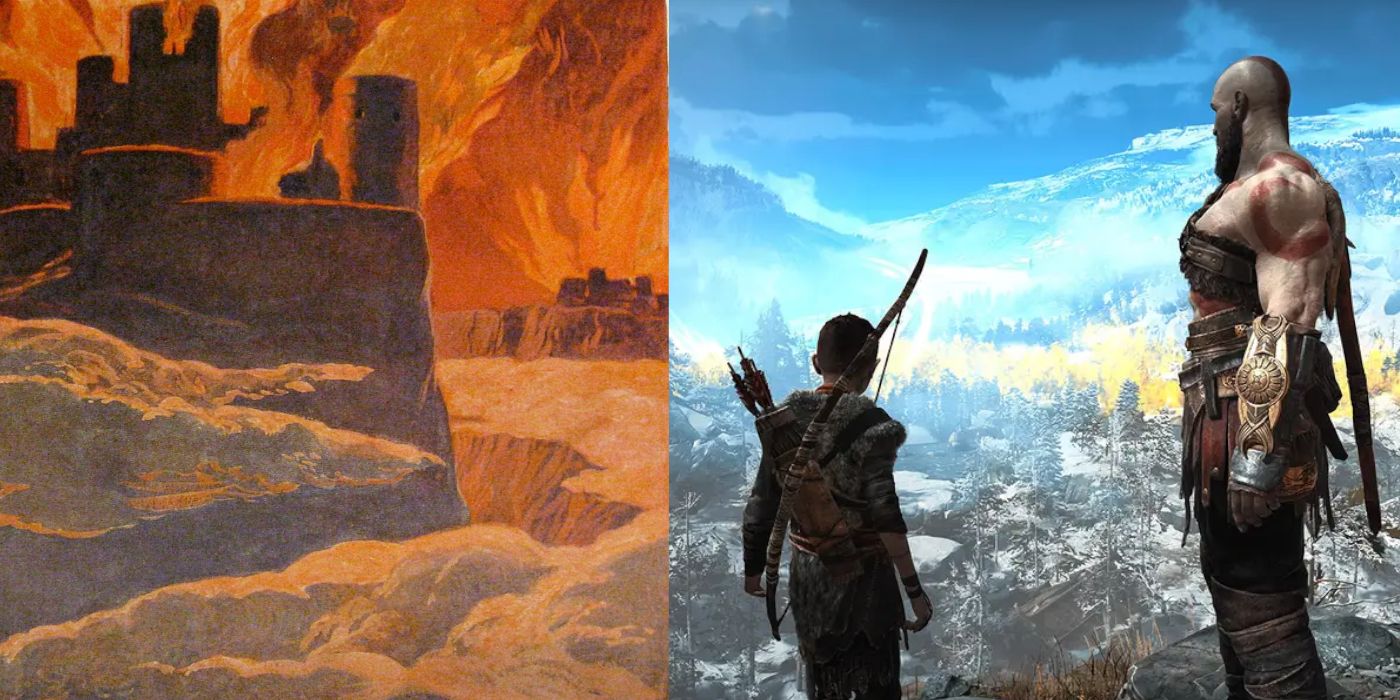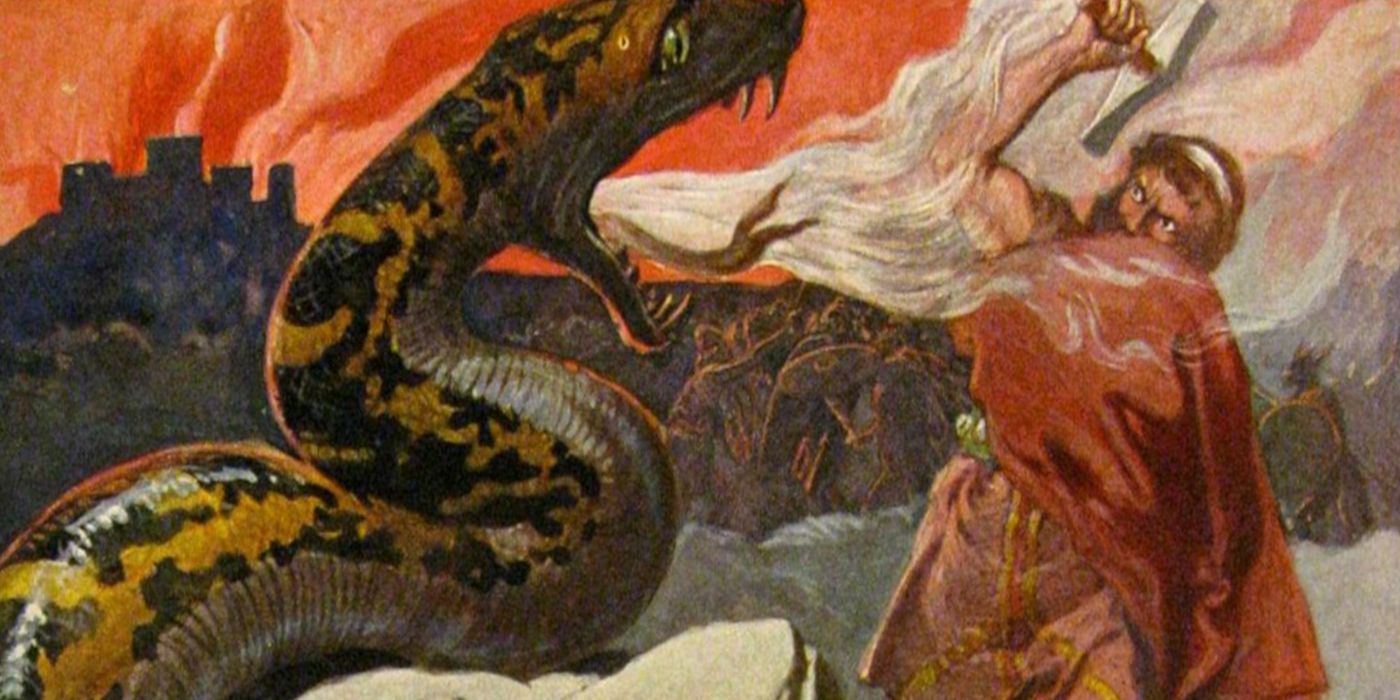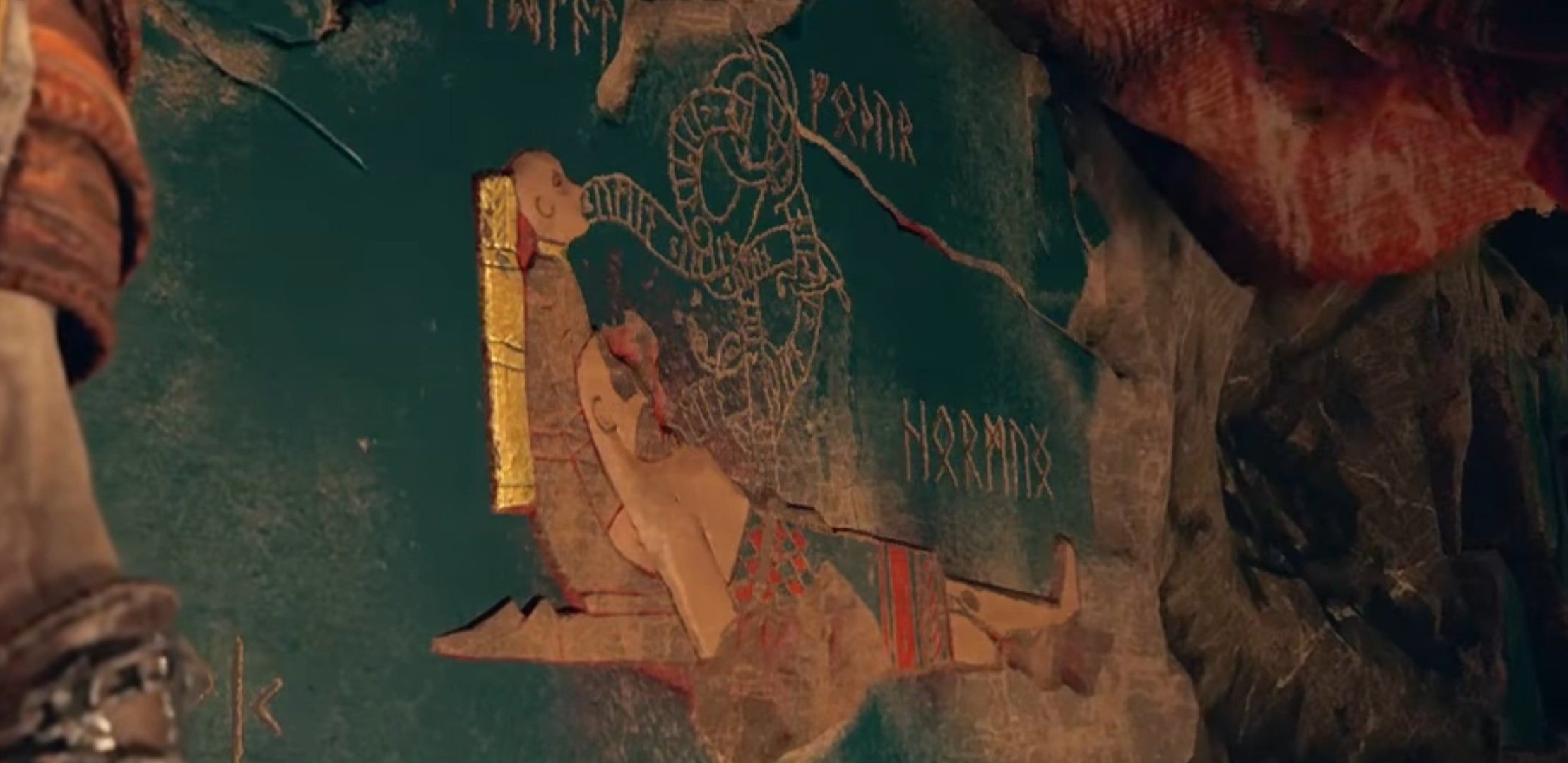God of War Ragnarok Sequel Has Already Changed Some Details of the Norse Apocalypse

The sequel to 2018’s God of War was announced in September, and unlike most sequels, the events of the next game have already likely been lain bare for keen-eyed fans. The title will very likely follow the events of Ragnarok, the death of the Norse gods, and the role that Kratos and his son Atreus – revealed to be Loki – have to play in the Norse apocalypse.
Many of the details of Ragnarok as it will appear in the sequel to God of War were mentioned by Mimir in the last game, as well as prophesized on the Jotunheim mural towards the end of the story. Many of the foretold events are identical to the Ragnarok of Norse mythology. Based on events that have taken place so far, however, there will be some differences between the myth and the realization of Ragnarok in the next God of War.

There are surprisingly few clear written sources for Norse mythology, and it would not be until centuries after Iceland’s conversion to Christianity that Icelandic nobleman Snorri Sturluson would provide the main written basis for the myth in the 13th century. However, this also means that Snorri’s version is very likely the sole basis for Ragnarok as it takes place in God of War. Snorri accounts the events of Ragnarok in great detail.
The death of Baldur - God of War 2018's antagonist - is the first prophesized event preceding Ragnarok. It is caused when Loki tricks Hod into killing Baldur with a branch of mistletoe. Hod is then killed by another Aesir, Vali. After that the three years of harsh winter known as Fimbulwinter begin. As punishment, Loki is bound with the entrails of some of his children, and held under the earth where a serpent's venom drips on him and his violent fits cause earthquakes.
Loki will then escape his prison, and Loki’s son, the wolf Fenris, will escape his binds as well. The World Serpent seen in God of War will be overcome by a fit of anger, causing tidal waves. Surtr the giant will lead an army across the Bifrost bridge from Midgard to Asgard and everything in his wake will be destroyed by flame. Fenris, the World Serpent, Loki, and the frost giants will all meet Surtr and his forces at Vigrid, a giant battlefield. Heimdall will awaken the Norse gods, who will ride for that place as well. The wolves Skoll and Hati will eat the moon and sun.
The following events will then take place: Odin, head of the Norse pantheon, will be eaten by Fenrir. Thor - seen in God of War's secret ending - will kill the World Serpent but will die from its poison. Tyr, the one-handed god of single combat, will fight the hellhound Garm, who will bite off Tyr's other hand, mortally wounding him but sustaining a fatal wound himself. Heimdall and Loki kill one another. Vidar, god of vengeance, kills Fenrir. Finally, Surtr sets the world aflame, and a flood washes over the land.
Despite it being the "Twilight of the gods," there are many Aesir who survive the events of Ragnarok. Both Baldur and Hod come back to life, and Hoenir, Magni, Modi, Njord, Vidar and Vali all survive as well. Despite Sol's death at the hands of Skoll, she gives birth to a daughter who replaces her as the sun.

The prophecy in God of War, especially the events as recounted by the head of Mimir, is almost identical to Snorri’s account of Ranarok. However, there are a few key differences. First, in 2018's God of War Baldur is killed by Kratos, not by Loki's trickery. Second, unless Atreus is imprisoned at the start of the next game, it seems Loki will already be free when Ragnarok begins. Loki's wife Sigyn also appears in the myth of his imprisonment, collecting the serpent's venom in a bowl to stop it touching Loki's face until the bowl fills. With Atreus still young, her appearance seems unlikely unless the next God of War takes place some time after the 2018 game.
Third, it seems unlikely that Fenris is the literal son of Loki, considering that Atreus is still a child, though Ragnarok as a myth does also play with circular time. Finally, the Jotunheim mural appears to show Atreus killing either Kratos or Odin – the body lacks Kratos’ tattoos, and either one could be being referenced by the runes meaning “father.” Kratos is Atreus' literal father, but Odin is the Allfather, patriarch of the Norse gods.
There are a few characters mentioned in the Ragnarok prophecy who are already dead after the events of the last game. While both survive Ragnarok in the original myth, Magni is killed by Kratos in God of War while Modi is apparently killed by Atreus after he stabs him and kicks him into a chasm. In the Ragnarok myth they would have taken up the hammer Mjolnir left behind after the death of their father, Thor. This could be the first hint that the violent cycle of fathers replacing sons that began in the original God of War trilogy may be coming to an end, though the violent nature of their deaths does not hint at an easy transition.
The next God of War will likely answer a question that has been building throughout the series: can the characters in God of War escape the cycle of patricide they appear trapped in, or, like Ragnarok as the death and rebirth of the world, are these events inevitable? The different ways the game’s Ragnarok diverges from the myth will likely help guide players in the direction of an answer, and fans should keep and eye out for the differences between the mythological Ragnarok and Ragnarok as it appears in the next game if they want to begin to unravel out one of the biggest mysteries across the God of War games.
A new God of War is in development for the PS5 and is slated to release in 2021.

Post a Comment